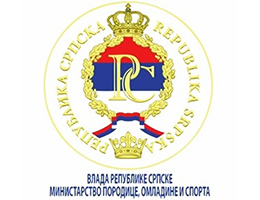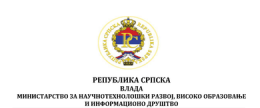The effect of tabata circuit training on weight loss and body fat percentage
Volume 14, Issue 2 (2024)
Volume 14, Issue 2 (2024)
The effect of tabata circuit training on weight loss and body fat percentage
Abstract:
A shift in lifestyle from active to passive movement and limited time for exercise as well as a lack of public
knowledge about exercise programs are obstacles to achieving a successful exercise program. The aim of this research is
to determine the effect of Tabata Circuit Training on weight loss and body fat percentage of Perigon Fitness Studio Yogyakarta
members. This research is an experimental research with instruments in the form of measurement tests, namely
measuring body weight with a body scale, measuring body fat with a skinfold caliper. The population in this study were
all members of Perigon Fitness Studio Yogyakarta who took part in the Tabata Circuit Training training program from
February to March 2020, totaling 58 people. The research sample used was 18 people taken using purposive sampling
technique. The data analysis technique uses the t test (paired sample t test) at a significance level of 0.05. The results of this
study show that the results obtained were a reduction in body weight of 2.83% and a reduction in body fat of 6.14%. These
findings suggest that Tabata circuit training is an effective intervention for reducing body composition. However, further
research is needed to explore the long-term effects, potential individual variations, and the role of additional factors such
as diet and exercise adherence.
Keywords:
weight, body fat, tabata circuit training
Full Text:
References:
Aliberti, S., Azzolino, D., Pers, Y. M., Cesari, M., & Rodríguez-Mañas, L. (2021). Impact of physical activity on the link between frailty and
mortality in older adults: A systematic review and meta-analysis. The Journals of Gerontology: Series A, 76(9), 1648-1656. https://doi.
org/10.1093/gerona/glab015
Aliberti, S., Calandro, A., Esposito, G., Altavilla, G., & Raiola, G. (2021). Three workouts compared: interval training, intermittent training and
steady state training for the improvement of VO2 max and BMI. Sportske Nauke i Zdravlje, 11(2), 197–204. https://doi.org/10.7251/
SSH2102197A
Baifa, Z., Xinglong, Z., & Dongmei, L. (2023). Muscle coordination during archery shooting: A comparison of archers with different skill
levels. European Journal of Sport Science, 23(1), 54–61.
Boutcher, S. H. (2011). High-intensity intermittent exercise and fat loss. Journal of Obesity, 2011, 868305. https://doi.org/10.1155/2011/868305
Campo, D. R. J., Andreu Caravaca, L., Martínez-Rodríguez, A., & Rubio-Arias, J. Á. (2021). Effects of Resistance Circuit-Based Training on
Body Composition, Strength and Cardiorespiratory Fitness: A Systematic Review and Meta-Analysis. Biology, 10(5), 377.
Campo, M., Sánchez, B., Villanueva, D., & Pires, F. (2021). Effects of 12 weeks of Tabata training on body composition, cardiorespiratory
fitness, and muscle strength in recreational athletes. The Journal of Strength & Conditioning Research, 35(1), 68-75. https://doi.
org/10.1519/JSC.0000000000003400
Da Silva, M. H. A. F., Gonçalves, E., Aquino, R., Liparotti, J. R., Alves, M. J., Ribeiro, R. D., & Figueiredo, A. J. (2022). Effects of maturity
status on anthropometric measures, physical fitness, and training load in young Brazilian soccer players. Human Movement, 23(1),
Donnelly, J. E., & Smith, B. K. (2005). Is exercise effective for weight loss with ad libitum diet? Energy balance, compensation, and gender
differences. Exercise and Sport Sciences Reviews, 33(4), 169-174. https://doi.org/10.1097/00003677-200510000-00004
Donnelly, J. E., Blair, S. N., Jakicic, J. M., Manore, M. M., Rankin, J. W., & Smith, B. K. (2009). Appropriate physical activity intervention
strategies for weight loss and prevention of weight regain for adults. Medicine & Science in Sports & Exercise, 41(2), 459-471. https://
doi.org/10.1249/MSS.0b013e3181949333
Friedman, M., & Wallace, B. (2023). Circuits of Capital: The Spatial Development of Formula One Racetracks. In The History and Politics of
Motor Racing: Lives in the Fast Lane (pp. 619–640). Springer. https://doi.org/10.1007/978-3-030-84270-8_25Gibala, M. J., & McGee,
S. L. (2008). Metabolic adaptations to short-term high-intensity interval training: A little pain for a lot of gain?. Exercise and Sport
Sciences Reviews, 36(2), 58-63. https://doi.org/10.1097/JES.0b013e318168ec1f
Gibala, M. J., Little, J. P., Macdonald, M. J., & Hawley, J. A. (2012). Physiological adaptations to low-volume, high-intensity interval training
in health and disease. The Journal of Physiology, 590(5), 1077-1084. https://doi.org/10.1113/jphysiol.2011.224725
Kadir, A. (2015). Penentu Kriteria Obesitas. Universitas Negeri Surabaya.
Kusparlina, E. P., Ishomuddin, Sukmana, O., & Sunaryo, S. (2023). Phenomenology Analysis of the Meaning of Healthy Living on Alternative
Medicine Practices. International Journal of Law and Society (IJLS), 2(3), 175–188. https://doi.org/10.59683/ijls.v2i3.40
Maillard, F., Pereira, B., & Boisseau, N. (2017). Effect of High-Intensity Interval Training on Total , Abdominal and Visceral Fat Mass : A
Meta-Analysis. Sports Medicine. https://doi.org/10.1007/s40279-017-0807-y
Maillard, F., Pereira, B., & Boisseau, N. (2017). Effect of high-intensity interval training on total, abdominal and visceral fat mass: A metaanalysis.
Sports Medicine, 48(2), 269-288. https://doi.org/10.1007/s40279-017-0807-y
Marpaung, D. R., & Sari, R. M. (2022). The implementation of plyometrics circuit model to increase jump power. Journal of Physics: Conference
Series, 2193(1), 12080.
Nasrulloh, A. (2018). Dasar-dasar latihan beban. Yogyakarta: UNY Press.
Pearson, S.J., Macaluso, A., & Hussain, S. R. (2015). High Intensity Interval Training Vs Moderate Intensity Continuous Training in the Management
of Metabolic Type Disease. MOJ Anatomy & Physiology, 5.
Pelemiš, V., Macura, M., Andevski-Krivokuća, N., Ujsasi, D., Pelemiš, M., & Lalić, S. (2015). Influence of aerobic training on the biochemical
and physical parameters of obese women. Facta universitatis series: Physical Education and Sport, 13(2), 217-228.
Permatasari, D., Purnawati, S., Imron, M. A., Satriyasa, B. K., Adiputra, L. M. I. S., & Sugijanto, H. &. (2017). Pelatihan Interval Intensitas
Tinggi Lebih Efektif Menurunkan Persentase Lemak Tubuh Dibandingkan Pelatihan Kontinyu Submaksimal pada Siswa SMAN 4
Tasikmalaya. Sport and Fitness Journal, 5(2), 1-12.
Popowczak, M., Kostrzewa-Nowak, D., Nowak, R., Podgórski, T., Leszczyński, P., & Rębilas, K. (2022). Tabata training vs. steady-state training:
Physiological and neuromuscular adaptations. International Journal of Environmental Research and Public Health, 19(5), 2716.
Popowczak, M., Rokita, A., & Domaradzki, J. (2022). Effects of Tabata Training on Health-Related Fitness Components Among Secondary
School Students. Kinesiology, 54, 221–229. https://doi.org/10.26582/k.54.2.2
Ramírez-marrero, F. A., Smith, B. A., Hoyo, C. M., Quintero, V. A., & Rivera-brown, A. M. (2014). Evaluation of a self-administered physical
activity assessment questionnaire for the puerto rico population. Puerto Rico Health Sciences Journal, 33(4), 174-183.
Ramírez-marrero, F. A., Trinidad, J., Pollock, J., Casul, Á., & Bayrón, F. E. (2014). Testing Tabata High-Intensity Interval Training Protocol
in Hispanic Obese Women. Journal of Women’s Health Physical Therapy, 38(3). https://doi.org/10.1097/JWH.0000000000000017
Saputra, B. W., Suharjana, S., & Munawaroh, H. (2023). The effects of Tabata training and high-intensity interval training (HIIT) on body
composition and cardiovascular fitness in female students. Jurnal Pendidikan Jasmani dan Olahraga, 8(1), 58-65.
Saputra, D. E. W., Suherman, W. S., Nugroho, S., Sumardi, P., & Asmawati, P. (2023). POST-COVID-19 HEALTH PROMOTION IN UNIVERSITIES:
MENTAL HEALTH AND SOCIAL MEDIA PROMOTION. Fizjoterapia Polska, 5(23), 85–94.
Sax van der Weyden, M., Toczko, M., Fyock-Martin, M., & Martin, J. (2022). Relationship between a Maximum Plank Assessment and Fitness,
Health Behaviors, and Moods in Tactical Athletes: An Exploratory Study. International Journal of Environmental Research and
Public Health, 19(19), 12832.
Scoubeau, C., Carpentier, J., Baudry, S., Faoro, V., & Klass, M. (2023). Body composition, cardiorespiratory fitness, and neuromuscular adaptations
induced by a home-based whole-body high intensity interval training. Journal of Exercise Science & Fitness, 21(2), 226–236.
Susanto, S., Siswanтoyo, & Sumaryanтo. (2022). Tradiтional Sporт-Based Pнysical Educaтion Learning Model In Cнaracтer Improvemenт
And Criтical Tнinking Of Elemenтary Scнool Sтudenтs. Sportske Nauke i Zdravlje, 12(2), 165–172. https://doi.org/doi.org/10.7251/
SSH2202165S
Susantо, E., Rahman, A., Suherman, A., & Maryanti, E. (2022). The effect of Tabata training on muscular endurance and cardiovascular fitness
in female college students. Jurnal SPORTIF: Jurnal Penelitian Pembelajaran, 8(1), 170-181. https://doi.org/10.29407/js_unpgri.
v8i1.16436
Tabata, I., Nishimura, K., Kouzaki, M., Hirai, Y., Ogita, F., Miyachi, M., & Yamamoto, K. (1996). Effects of moderate-intensity endurance and
high-intensity intermittent training on anaerobic capacity and VO2max. Medicine and Science in Sports and Exercise, 28(10), 1327-
1330.
Vidiari J, & Indira. (2017). High Intensity Interval Training (HIIT) Lebih Miningkatkan Ambang Anaerobik Daripada Steady State Training
Pada Siswa Anggota Kelompok Ekstrakurikuler Atletik Lari Jarak Pendek. Sport and Fitness Journal, 5, 62–70.
Youcef, K., Mokhtar, M., Adel, B., & Wahib, B. (2022). Effects of Different Concurrent Training Methods on Aerobic and Anaerobic Capacity
in U 21 soccer players. Sportske Nauke i Zdravlje, 12(1), 10–22. https://doi.org/10.7251/SSH2201010Y






